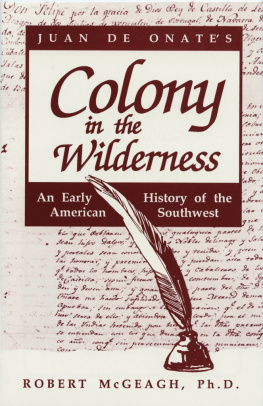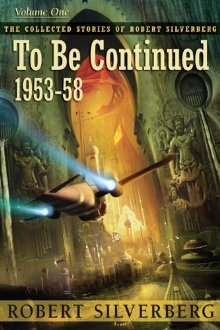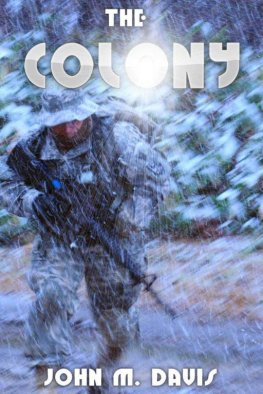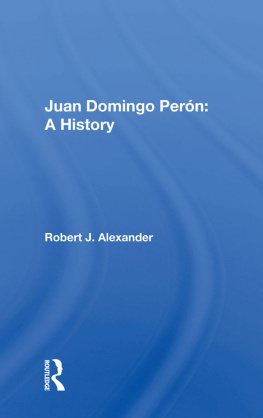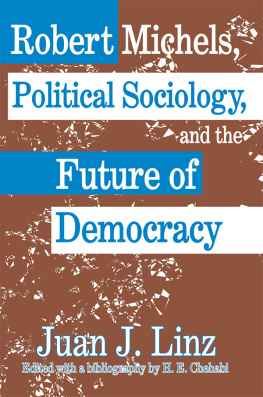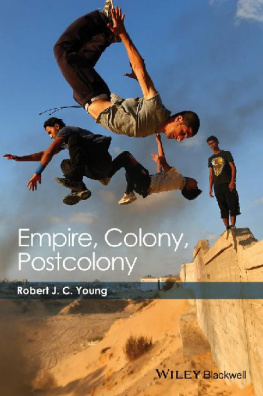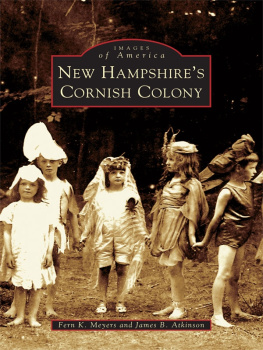Copyright 1990 by Robert McGeagh
All Rights Reserved
No part of this book may be reproduced in any form or by any electronic or mechanical means including information storage and retrieval systems, without permission in writing from the publisher, except by a reviewer who may quote brief passages in a review.
Printed in the United States of America
Library of Congress Cataloging in Publication Data:
McGeagh, Robert, 1934
Juan de Onate's colony in the wilderness: an early history of the American Southwest / Robert McGeagh. -- 1st ed.
p. cm.
Includes index.
ISBN 0-86534-153-2: $8.95
ISBN 9-78161139-992-9 (e-book)
1. Onate, Juan de, 1552-1627. 2. New MexicoDiscovery and exploration. 3. New MexicoHistoryTo 1848. 4. SpaniardsNew
MexicoHistory. I. Title.
F799.M29 1990
978.9'01'092dc20
90-49998
CIP
Published in 1990 by SUNSTONE PRESS
Post Office Box 2321
Santa Fe, NM 87504-2321 / USA
PREFACE
The idea for this history of one of Europes oldest American colonies originated in 1984 at a ticket desk in the Dallas/Fort Worth Airport where I had gone to pick up a pre-paid ticket to Albuquerque, New Mexico. When asked for identification, I presented my New Mexicos drivers license, only to be told that a Mexican license did not meet the airlines requirements. And earlier this year at a Community College convention in Seattle, Washington, I was listed as a foreign visitor.
Similar stories of mistaken identity with our neighbor to the south are legion in New Mexico, prompting one author to refer to the region as the missing state and causing the states automobile license plates to display the paranoid inscription: New Mexico, U.S.A. Consequently, I decided to contribute to New Mexicos quest for geographical integrity and tell the story of the origins of an ethnic heritage which is deeply woven into the warp and woof of todays America.
But if the geographical location of the state remains an enigma to many out-of-staters, its history remains even more illusive. Generally, American History books, taking inspiration from the purveyors of the Black Legend which depicted Spain as the evil empire, gives only passing mention to the pervading influence of that country on this nations past.
The American Southwest was coveted by early Spanish explorers for its potential mineral wealth for the State and for its abundant harvest of souls for the Church. Although the hopes for golden cities and riches beyond their wildest dreams were never fulfilled, the conquistadors of New Mexico left a legacy of prodigious achievements and sired a thriving population which today shares the bloodlines of both Spanish and Indian forbears.
The opportunity to relate the early history of New Mexico presented itself on the occasion of the commemoration of the Columbus Quincentennial scheduled for 1992. To mark the event, the Rio Arriba County Commission passed a resolution in March 1990 to erect a monument in honor of Don Juan de Onate, conquistador and colonizer of the region. To help promote public awareness and support for the project, I was asked to write a narrative history of the discovery, exploration and colonization of New Mexico.
Generations of Spanish conquistadors extended Columbus work of discovery throughout the Western Hemisphere. Within forty years of the first landfall in the Caribbean, explorers and missionaries were trudging through the deserts and across the mountains of New Mexico in search of gold, silver and souls. Thus began the encuentro', the coming together of two disparate races and cultures to create a syncretistic fusion, a new race, which still preserves its Hispanic language and culture, and forms part of a unique mosaic of ethnic pluralism in 20th century America.
My story begins with the arrival of the first Europeans in New Mexico in the 1530s and ends with the completion of the discovery and settlement in 1700. For my facts I have relied on the standard sources, especially on the pioneering research of Ralph Emerson Twitchell in The Leading Facts of New Mexican History" (published 1911) and the exhaustive documentary collections compiled by George P. Hammond and Agapito Rey in their 1953 study Don Juan de Onate, Colonizer of New Mexico 1595-1628. Recent translations of Onate and de Vargas documents by John Kessel further illuminate the early period of American Southwestern History. But undoubtedly, the most dramatic and full account of the colonization is that of Onates chronicler, Gaspar Perez de Villagra, whose epic poem describes the events of Onates conquest of the Upper Rio Grande.
Among the many secondary sources contained in books, articles and monographs, I am particularly indebted to the work of Warren Beck, whose New Mexico: A History of Four Centuries still remains the best scholarly survey of the states history.
On this occasion of the Columbus Quincentennial and the inauguration of the monument to Juan de Onate, I offer this overview of Spains colony in the wilderness in hopes that it will shed some light on a vital historical period of our nations past, and at the same time, help to dispel some popular misconceptions concerning the geographical location of the state of New Mexico, U.S.A.
Robert McGeagh, Ph. D.
Espanola, New Mexico
September 10, 1990
INTRODUCTION
When I was a boy growing up in Guachupange in the Espanola Valley in northern New Mexico, my father used to tell me stories of our ancestors who came to this valley on the Upper Rio Grande centuries ago. He told me of the great men of our past: the explorers Cabeza de Vaca and Coronado, and the colonizers Onate and de Vargas. I thrilled to the exploits of these Spanish conquistadors, and the sacrifices and hardships they endured to settle these lands in the American Southwest.
But when I attended school, the history books told me only of the first colonizers of the European settlements in the East, authentic heroes like Captain Smith, Sir Walter Raleigh and William Penn. Yet Juan Vasquez de Coronado explored this part of the future United States long before the English, Dutch and French settlements appeared along the Atlantic seaboard. However, U.S. history surveys continue to ignore the historic deeds of our Hispanic forbears. In a recently published edition of A People and a Nation: a History of the United States" (1990, p 16) the authors state: Venturing northward (from Mexico), conquistadors like Juan Rodriguez Cabrillo, Hernando de Soto and Juan Vasquez de Coronado found little of value"this in spite of the fact that, in his day, Coronados detailed reports on the geography of the Southwest and his observations on the flora and fauna of the region ranked on a par with the later surveys of Lewis and Clark and Zebulon Pike.



